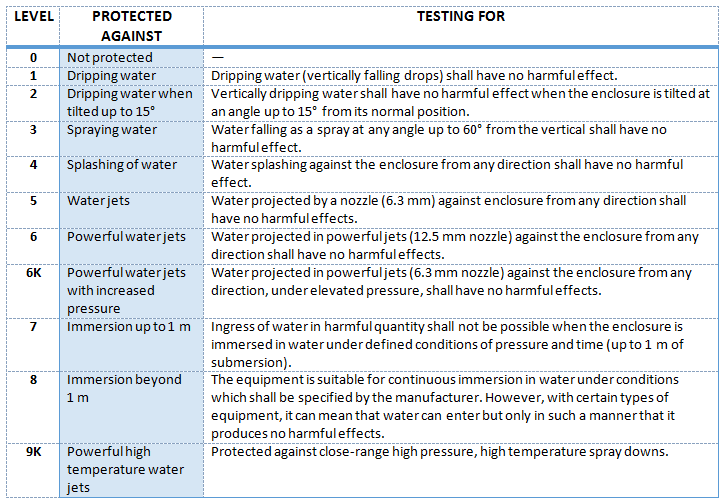Gadgets and Water Resistance: IP rating Explained

ATM Rating: What does it mean?
You are planning to buy a new gadget. You search the internet for reviews. Watch commercials where it's advertised as waterproof or water resistant, and finally you make your choice. The bad thing here is that your device may fail if you decide to swim with it. Let's see what is the true meaning of water-resistance and how to understand the meaning of water-resistance rating.
To make things clear - no device is completely waterproof. In the best case your device will survive heavy rain, but the same device will probably fail after a diving session.
ATM Rating: What does it mean?
We use the ATM rating to tell how much static atmospheric pressure your device can endure when you submerge it. It is usually found on mechanical watches as well as on those that are battery driven.
The table below shows the ATM ratings for watches and wearables. Generally 1 ATM equals 10 meters and in the table we have decided to convert meters into feet. For example 1 ATM means that you are at the sea level. Such devices offer no submersion protection and even placing it just under the surface for a second will cause damage to it.
However, you have to keep in mind while reading the other ATM ratings, that the test was conducted in with the devices standing perfectly still. Any movement increases the pressure. For example, if your watch is rated t 3 ATM it will survive heavy rain without any problems, but if you spray it with a high-pressure hose it definitely won't.

Since there isn't an official body which performs the ATM tests it is left to the manufacturer to label it accordingly.
Now, let's check the other rating standards.
IP Rating: What you need to know
The IP in IP rating stands for Ingress Protection. A device gets an IP rating after very controlled tests so it's much more accurate than ATM rating. In case the manufacturer doesn't provide an IP rating of its device feel free to doubt the IP rating or at lease read the user's manual carefully.
For example it may say that your device is water-resistant. On the other hand this tells you nothing since you don't know how water-resistant it is. Chances are that the manufacturer wanted to save money on testing or maybe they knew in advance that they won't pass the testing and get poor rating but still decided to advertise the device as water-resistant with no IP rating.
The IP rating comes in the following format - IPXY. IP stands for ingress Protection. The X is the rating of protection against solids (anything from fingers to dust). The Y stands for protection against liquids (anything from misting to deep immersion). The number the device gets in each category means that it has successfully passed all the previous levels.
Let's take a look at the IP rating table for protection against physical ingress.

When we talk about wearables and gadgets, the protection between 0 and 4 means nothing to us and is practically irrelevant. Just the basic design of portable electronic devices guarantees IP4 rating since the openings on the device won't allow you to stick a screwdriver or a finger in it.
The following table is something that we are more interested in. It's the IP rating for protection against liquids.

Just by getting a quick look at the table we know what we can expect from our device. For example an iPhoneX carries IP67 certification. It means that it's completely dust-tight. and can handle immersion of up to one meter which is pretty good.
Additionally you will see that some devices carry the rating in the IPX7 format, for example. The X here means that the manufacturer didn't test the device for protection against solids, but conducted test for protection against liquids. To understand the IP rating better feel free to read this article from James Longman.
And, what's the best IP Rating?
Practically, the best rating for your device which is also the maximum is IP68. If your device comes with such rating you can be calm. Not only it is completely resistant to dust, but it is also protected against water up to 1 meter in depth. For example, Samsung Galaxy S10e / S10 / S10+, iPhone 11 Pro and similar phones are rated at IP68.
